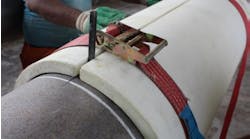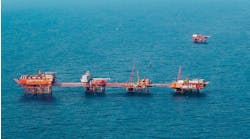IFE seeking more accurate analysis of multiphase flow
Norway’s Institute for Energy Technology (IFE) is one of the players in a major research drive to extend knowledge of multiphase pipeline flow.
Along with the Norwegian University of Science and Technology (NTNU) and the Foundation for Scientific and Industrial Research (Sintef), IFE is responsible for the Flow Assurance Center - FACE - which will conduct an ambitious eight-year research program tackling new challenges in simulating and modeling complex multiphase flow.
The initiative for FACE came from the Research Council of Norway (RCN) and represents a new approach to research funding, says Liv Lunde, special adviser on petroleum technology at IFE. It is one of 14 major programs which the RCN has designated centers for research-based innovation. FACE is a virtual center - the participating research institutes will carry out work at their existing facilities.
The contract for the FACE program is expected to be signed shortly. The overall budget is NKr 232 million ($37.7 million), of which NKr 84 million ($13.66 million) will come from the RCN. A further NKr 112 million ($18.2 million) will be provided by oil company sponsors ConocoPhillips, Norsk Hydro, Statoil and Total, with NKr 24 million (3.9 million) coming from suppliers Aker Kvaerner, FMC, Scandpower Petroleum Technology and Vetco Gray. The three research institutes will put up NKr 12 million ($1.95 million) between them.
The main idea is to combine two fields of expertise, says Lunde, namely the hydrodynamic expertise developed by IFE and Sintef, and the surfactant expertise developed by NTNU’s Ugelstad Laboratory under Johan Sjöblom, professor of surface and colloidal chemistry. IFE has worked with Ugelstad Laboratory on corrosion projects, but it is the first time the laboratory has participated in multiphase flow research.
With the thrust of the research aimed at modeling flow of complex mixtures, there was much to gain from combining hydrodynamic expertise with surfactant knowledge, says Jan Nossen, head of IFE’s multiphase technology section.
The research will focus on three main areas: particle suspensions, emulsions, and heavy crudes. An early part of the work will be aimed at designing new test fluids which better resemble real crude oils, and developing improved methods for characterizing them, says Nossen. Test fluids currently used are typically simpler than real crudes, and methods for predicting their behavior are not accurate enough.
In the real world, multiphase flows are more likely to be complex than simple. Solid particles such as sand tend to become entrained in the wellstream and affect its behavior in the pipeline. The flow itself tends to be jerky rather than smooth, resulting in oscillations that can disturb the operation, while the shearing action of the flow creates emulsions which increase pressure loss and complicate separation.
Heavy oil is a problem in itself. Existing simulators mostly have been developed against lighter crudes, and do not function satisfactorily in predicting the behavior of heavier oils.
Another focus will be on the behavior of multiphase fluids in separators. What happens in separators is not well understood, especially with regard to heavy crudes, says Nossen. These are relevant issues for the industry, both in light of the many heavy oil fields waiting to be developed, and its desire to realize the potential of subsea separation.
Flow exit analysis
Meanwhile, the NKr 63 million ($10.24 million) Horizon project on long-distance multiphase flow, which began in 2004, has another year to go. IFE is running the project jointly with Scandpower Petroleum Technology, the company responsible for marketing the OLGA multiphase flow simulation tool. Horizon brings together 35 researchers, more than half of them PhDs, according to IFE’s project manager, Erik Jarl Holm.
A particular focus has been improving the understanding of the flow as it emerges from the well and enters the pipeline. Previously, no pipeline computing took place with respect to dynamic events in the reservoir or well, he says. Instead, simple assumptions were made. This was fine if reservoirs fluids were flowing normally, but not otherwise. Use of gas-lift, for example, can make the flow unstable, but it was not possible to model these instabilities with existing tools.
This gap now has been filled by the development of a prototype near-well reservoir module which is being coupled with OLGA. Testing should be complete by summer, and IFE and Scandpower plan to present the near-well module at the Multiphase Production Technology conference in Edinburgh, Scotland, in June. Plans also are being laid for a follow-up JIP to further develop the module. This will again be collaboration between IFE and Scandpower, and some of the oil companies backing Horizon are expected to be involved. New oil companies also will be welcome.
Among other achievements is the development of a completely new hydrodynamic flow model which includes new descriptions of friction and turbulence. This is in the form of a prototype module for different flow regimes, and will form the basis for a second-phase Horizon JIP. Modeling capacity has been extended to cover oil, gas and water flows rather than just oil and gas flows. No contract has yet been signed for a follow-up JIP, but there is strong interest on the part of the industry, Holm says.
Important advances in flow assurance work also have been recorded. The main deliverables are two-fold: the simulator program has been made much more general, and has been extended to accommodate the transport of particles such as sand, wax and hydrates. This latter feature will be relevant to the FACE research.




